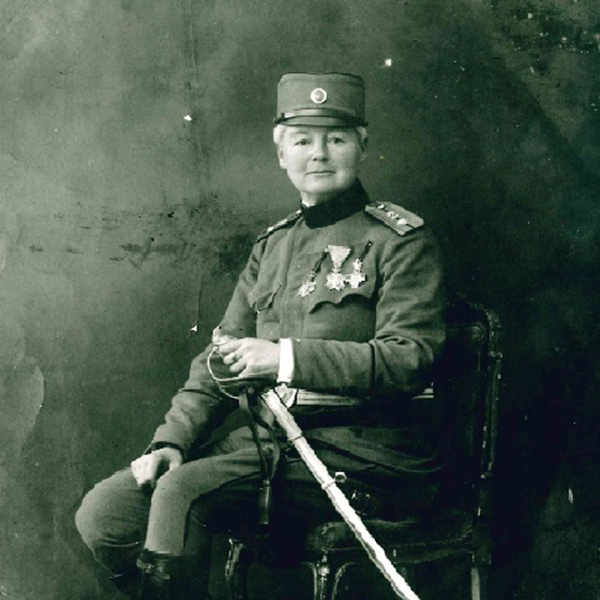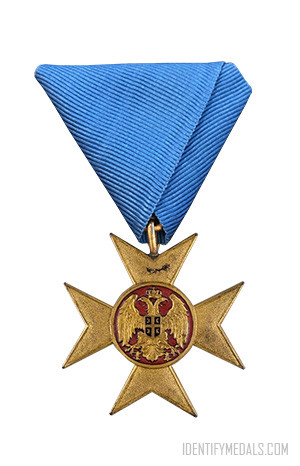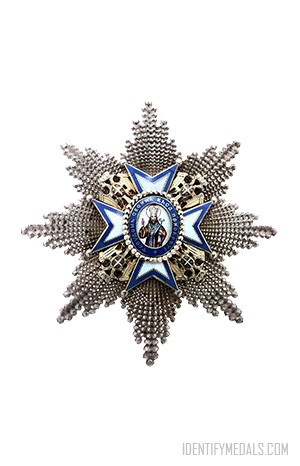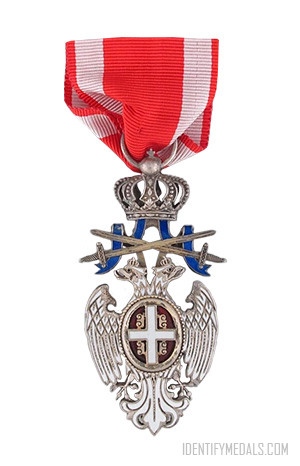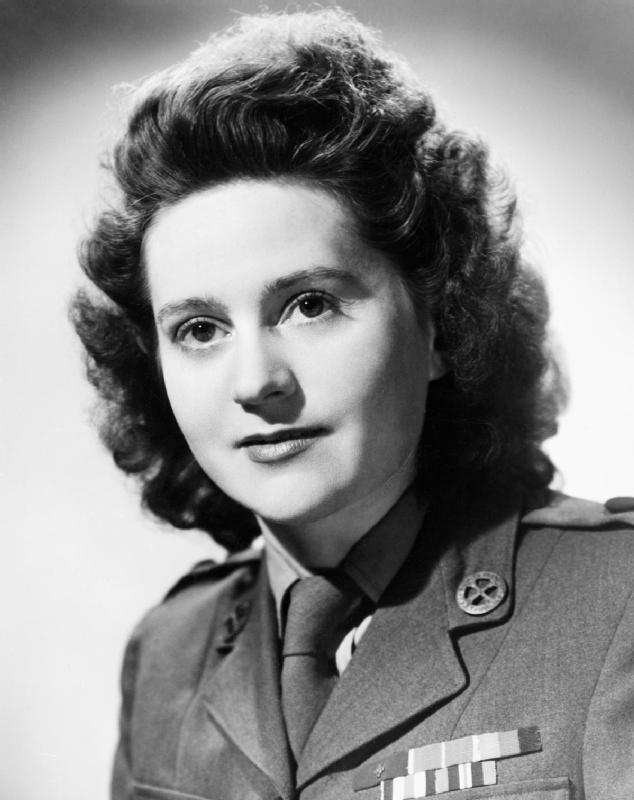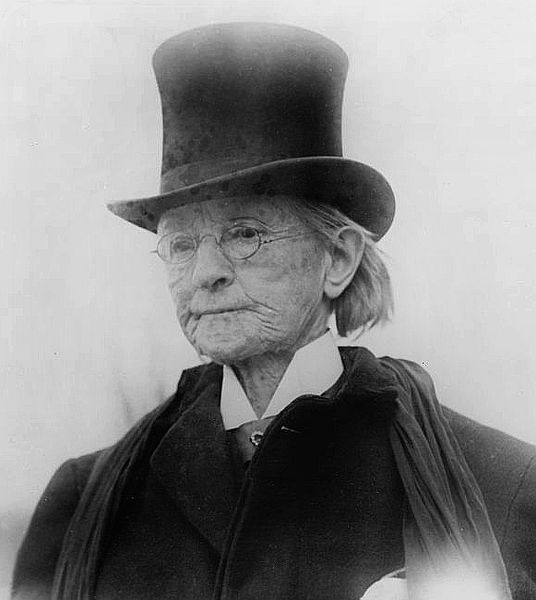Over 600 British women contributed to the war effort in Serbia during World War I, including women like Captain Flora Sandes, Dr. Elsie Inglis, and Dr. Isabel Galloway Hutton who are featured on Serbian stamps commemorating the centennial of World War I.
Women and Military Medals During WW1
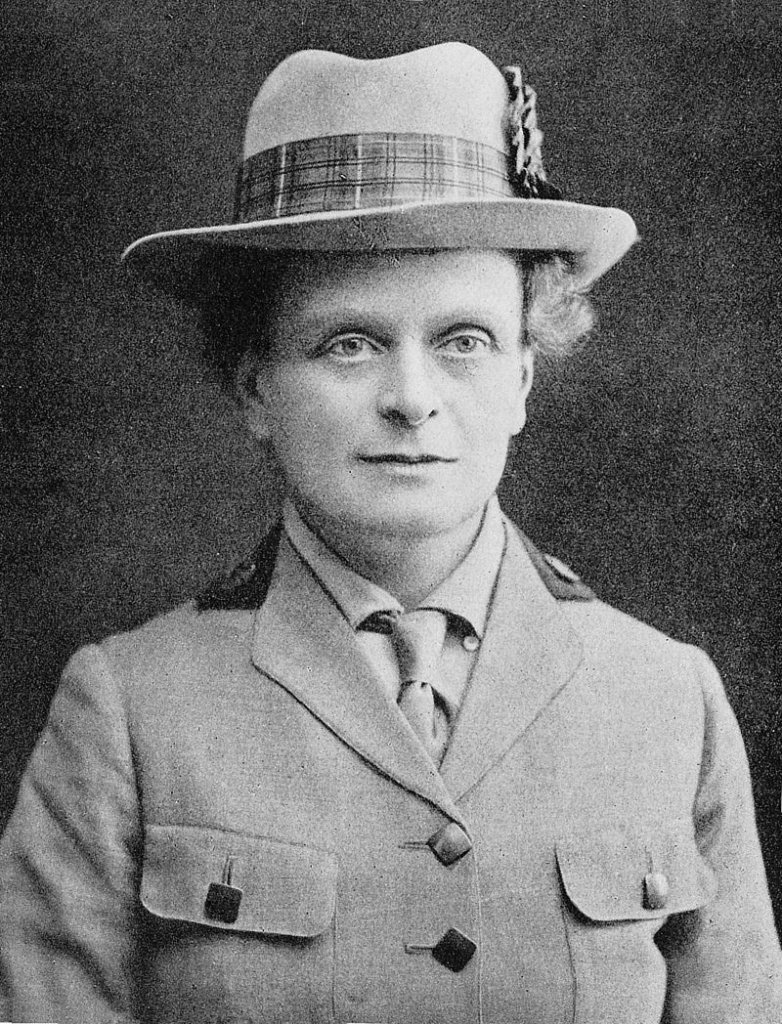
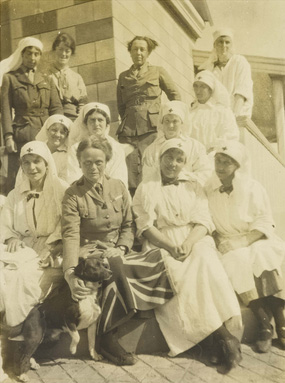
Many of the British women who served in Serbia were doctors, nurses, and ambulance drivers, but Flora Sandes was unique: she was the only British woman to officially serve during World War I. Due to their substantial contributions, many of these amazing women received military medals from not only Serbia but also Russia, France, and Great Britain for their service. Here are just a few of their stories.
Dr. Elsie Inglis
Dr. Elsie Inglis was one of the first female graduates of the University of Edinburgh, and she was a suffragist who would not take no for an answer. When she first asked the War Office if she, as a qualified doctor, could open up a hospital and serve on the frontlines, she was told to “go home and sit still.”
Undeterred, Dr. Inglis decided to found her own hospital, which became known as the Scottish Women’s Hospitals. Hundreds of British women served at these hospitals overseas, including 60 doctors, but the most prominent locations were in Serbia.
Those who served alongside Dr. Inglis faced incredible dangers like a typhus epidemic in early 1915 and the “Great Retreat” of the fall of 1915. Dr. Inglis and others chose to remain with the hospitals even though they became prisoners of war under the Germans. Later, after the Germans had sent home Dr. Inglis and her staff, she traveled with the Serbs to the Russian front near the end of 1916 to set up two field hospitals even though Inglis had learned that she had cancer.
Although Dr. Inglis would not live until the end of the war—she died on November 26, 1917 in England, she posthumously received the highest awards in Russia and Serbia: the Gold St. George Medal and the White Eagle with Swords. It was an especially high honor, as Dr. Inglis was the first female recipient of these awards although she did not live to accept them in person.
Bessie Dora Bowhill
Bessie Dora Bowhill was a woman who served alongside of Dr. Inglis. Although Bowhill is less well-known than Inglis, she nevertheless did much to improve the lives of the Serbians she served. Bowhill had served during the Boer War and joined one of the Scottish Women’s Hospitals in Serbia during the First World War. She retained her senior position as a matron of the unit until she left Serbia in 1916. Like Dr. Inglis, Bowhill experienced the German occupation and did much to assist the suffering Serbians. Bowhill received the Serbian Cross of Mercy as well as the British War Medal and the British Victory Medal due to her nursing work in Serbia.
Dr. Isabel Galloway Hutton
Dr. Isabel Galloway Hutton was another example of a woman who was turned away from the War Office like Dr. Inglis and instead chose to serve in the Scottish Women’s Hospitals to support the war effort. Dr. Hutton—then Dr. Emslie as she married Major Thomas Hutton in 1921—started her service in 1915 and would serve until 1920 in France, Greece, and Serbia. Dr. Hutton was a trained psychiatrist who specialized in mental disorders, so she took the position of Assistant Medical Officer and Pathologist with the Scottish Women’s Hospitals. She started in France and then later moved onto Serbia.
As Chief of the no. 2 Scottish Women’s Hospitals, Dr. Hutton is known for accompanying the Serbian army during its advance in 1918. She was awarded the Serbian orders of the White Eagle and St. Sava, the Russian Order of St. Anna, and the French Croix de Guerre (or Cross of War).
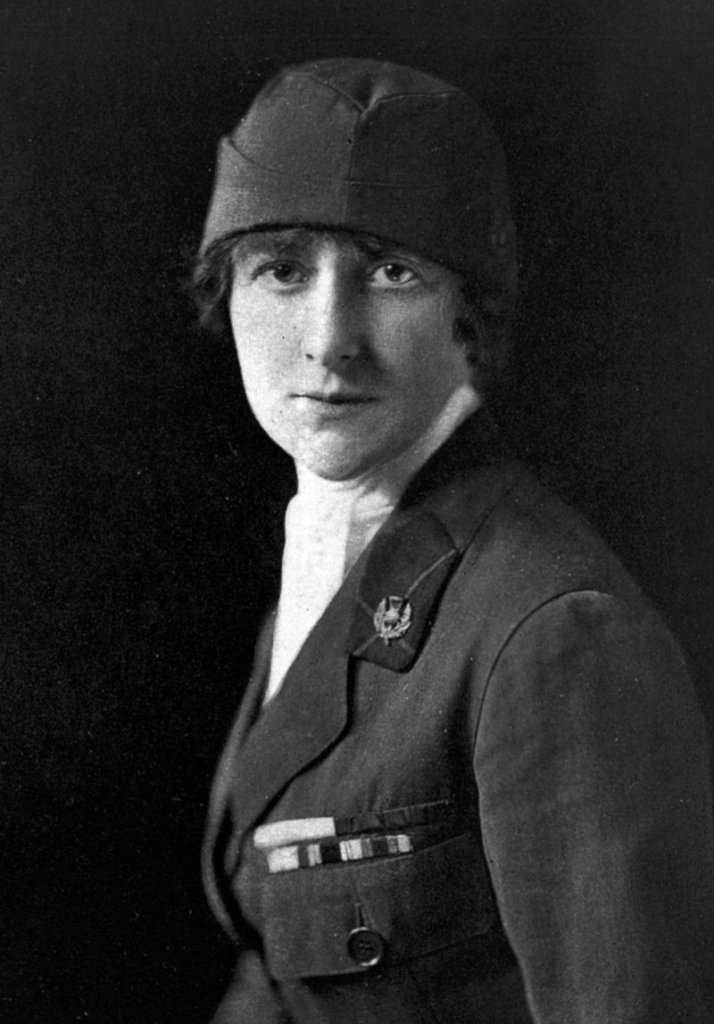
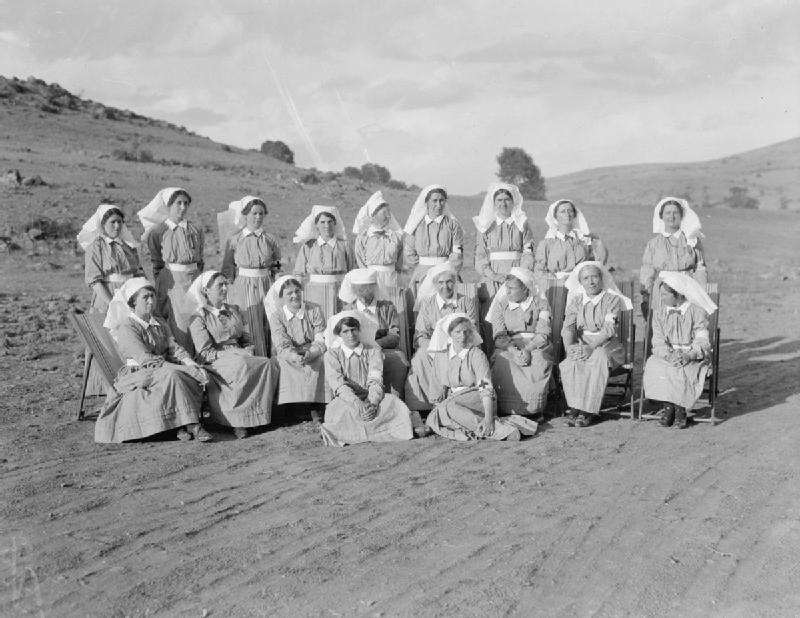
Medals
Captain Flora Sandes
While women like Dr. Inglis, Bowhill, and Dr. Hutton put themselves in harm’s way often serving alongside the military, one woman did even more: Captain Flora Sandes. A British woman who was not content to sit on the sidelines, Sandes wanted to be in the fray.
But Sandes wanted to keep serving and asked the regiment’s commander, Colonel Milić, if she could stay on as a private in the Serbian army. The colonel agreed, and Sandes became a beloved part of the regiment. The men called her “Nashi Engleskinja,” or “Our Englishwoman,” and sometimes even called her “brother.”
In late 1915, Sandes fought alongside the Serbians during the Great Retreat across Albania. Once they reached the coast of Albania, Sandes began relief efforts for the remaining Serbs, and she was promoted to sergeant. After making a brief trip to England, Sandes returned to Serbia near the end of World War I to join the Serbian advance that pushed the Austrians, Bulgarians, and Germans out of Serbia in 1918.
Sandes had always been inspired by the charge of the British cavalry against the Russians during the Battle of Balaklava, commemorated by Alfred, Lord Tennyson’s “The Charge of the Light Brigade.” When World War I broke out, Sandes was 38 years old, but she still wanted to serve. She applied to serve with the Voluntary Aid Detachment (VAD) but was turned down due to her connection to the suffrage movement. Sandes decided to try the Serbian Red Cross where she was more successful. She not only served as a nurse but also came back to England to raise money for the Serbian war effort in late 1914 and early 1915.
When the typhus epidemic broke out, Sandes was there just like Dr. Inglis. In the fall of 1915, Sandes joined a medical unit attached to the Serbian army in order to continue to work in Serbia. After the Bulgarians pushed the Serbian regiment to which Sandes and the medical unit was attached to an area without roads, the medical team could no longer follow in the ox wagons.
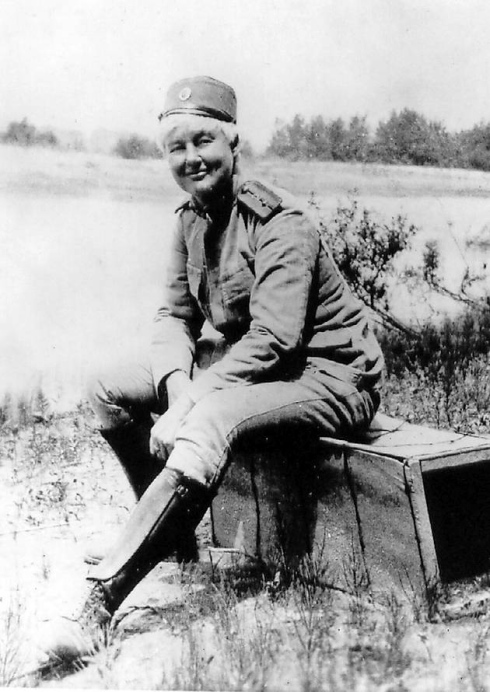
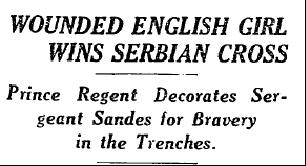
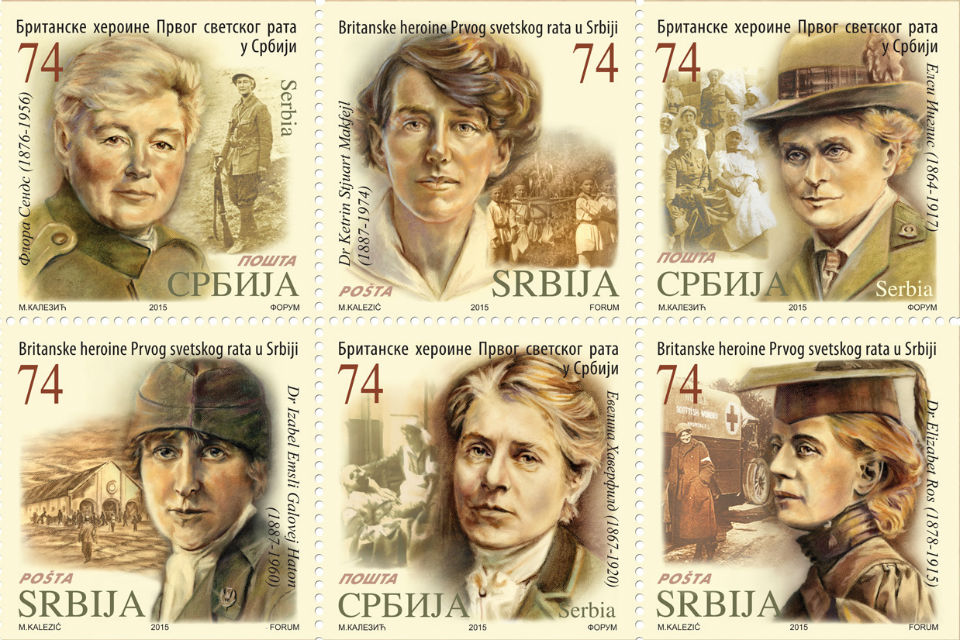
In June 1919, a special Serbian Act of Parliament honored Sandes and made her the first woman to be commissioned in the Serbian Army, promoting her to captain.
In addition, Sandes received seven medals during her service, including the Order of the Karađorđe’s Star, the highest decoration of the Serbian Military.
These four women are just a small sample of the over 600 women who served in Serbia during World War I, and each contributed in her own way, as the wide variety of medals that each woman received demonstrates. Whether on the battlefield or in a hospital tent, these British women made life significantly better for the Serbs during World War I and rightfully received some of the highest military medals for their service.
Notes:
Bessie’s medal record card can be downloaded, for a small fee, from the National Archives. It shows she was a Matron with Dr. Inglis’ Unit and the Scottish Women’s Hospital. See http://discovery.nationalarchives.gov.uk/details/r/D6068814
Sources
- https://www.theyworkforyou.com/whall/?id=2017-11-28a.29.1
- Allcock, John B., and Antonia Young. Black Lambs & Grey Falcons: Women Travellers in the Balkans. Berghahn Books, 2000.
- Bourke, Joanna. “Women and the Military During World War One.” BBC News, 3 March 2011, www.bbc.co.uk/history/british/britain_wwone/women_combatants_01.shtml. Accessed 30 December 2018.
- Brocklehurst, Steven. “The female war medic who refused to ‘go home and sit still.’” BBC.
- News, 26 November 2017, www.bbc.com/news/uk-scotland-42096350. Accessed 30 December 2018.
- “Elsie Inglis to be commemorated for war achievements.” BBC News, 8 November 2017, www.bbc.com/news/uk-scotland-edinburgh-east-fife-41915396. Accessed 30 December 2018.
- Hartley, Cathy, editor. “Inglis, Elsie Maud.” A Historical Dictionary of British Women. Psychology Press, 2003, p. 237.
- Sandes, Flora. The Autobiography of a Woman Soldier: A Brief Record of Adventure with the Serbian Army, 1916-1919. H. F. & G. Witherby, 1927, p. 220.
Guest Contributor: Rachel Basinger is a former history teacher turned freelance writer and editor. She loves studying military history, especially the World Wars, and of course military medals. She has authored three history books for young adults and transcribed interviews of World War II veterans. In her free time, Rachel is a voracious reader and is a runner who completed her first half marathon in May 2019.

